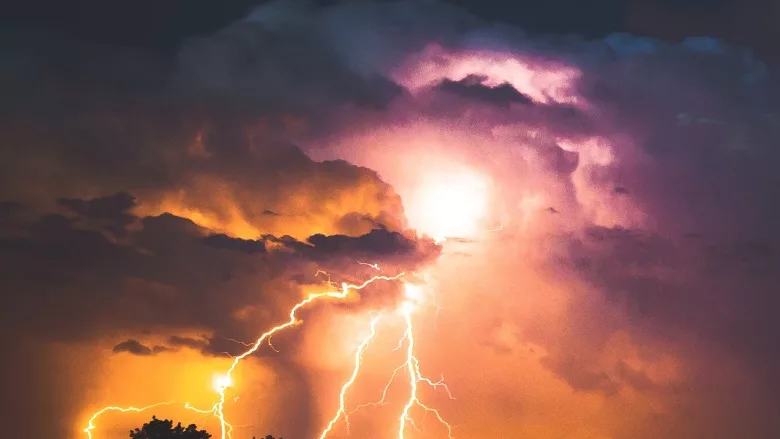Don’t let the weather take down security and life safety systems

Image via Unsplash
In their relentless pursuit to safeguard their operations from the disruptive effects of inclement weather, businesses typically spare no effort in investing in preventative measures such as weather-resistant infrastructure and obtaining comprehensive insurance coverage. However, amidst these proactive endeavors, one crucial aspect of protection is often overlooked.
Surge protection is a critical piece of equipment that safeguards valuable electronic systems from sustaining damage due to lightning strikes and other inclement weather, including power surges caused by electrical disruptions due to high demand on the grid during excessive heat or cold spells. While businesses may recognize the vulnerability of their hardware to various weather conditions, the significance of surge protection for security and life safety systems cannot be overstated given the cost to replace these systems and the liability that arises when they are not in operation.
Weather-related power surges can damage or destroy sensitive electronic equipment, leading to data loss, system downtime and costly system repairs or replacements. By incorporating robust surge protection devices, businesses can fortify their security systems against the damaging impact of power surges, effectively mitigating risks and ensuring the continuous operation of their critical infrastructure.
What many business owners may not know is that their security systems are extremely susceptible to damaging power surges, perhaps more so than other systems. There are many reasons for this, one being the location of the security system itself. Unlike other electrical equipment, such as computers or televisions, it is not uncommon for security devices to be installed outdoors. Exterior surveillance cameras and access control devices are vulnerable to lightning damage, as the electronics, cabling and peripheral equipment are made from conductive materials.
Secondly, today’s fire alarm systems are becoming increasingly complex with multiple IoT sensors, annunciators and numerous communication features for emergency notification. The sensitivity and interconnectivity of many IoT devices makes them particularly vulnerable to the damaging effects of power surges, which can quietly and invisibly render them useless until detected or an emergency event takes place and the system does not operate as intended, or at all.
From a business perspective, the potential loss from security system downtime can dramatically exceed the cost of the damaged equipment. This is especially true for highly regulated facilities. Casinos, cannabis factories, correctional facilities and airports are all required, to some degree, to comply with industry regulations related to access control and video surveillance. Failure to meet these standards could result in costly fines, legal action and even facility shutdown. While surge protection cannot eliminate all risks, it is a mission critical necessity to be recognized by every security professional.
Based on current weather conditions, the time to start implementing surge protection for security systems is now. As people seek relief from the summer heat, they rely heavily on power-intensive devices like air conditioners and refrigerators, creating an imbalance between power supply and demand. To manage this situation, utilities may implement power flow restrictions, causing voltage fluctuations that indirectly cause destructive power surges.
With the current risk of energy shortages exacerbated by climate conditions, implementing surge protection for security systems becomes even more imperative. By recognizing surge protection as a core security and life safety system prerequisite, businesses can fortify their infrastructure, mitigate risks and ensure continuous operation in the face of weather-related power surges.
This article originally ran in Security, a twice-monthly security-focused eNewsletter for security end users, brought to you by Security magazine. Subscribe here.
Looking for a reprint of this article?
From high-res PDFs to custom plaques, order your copy today!





